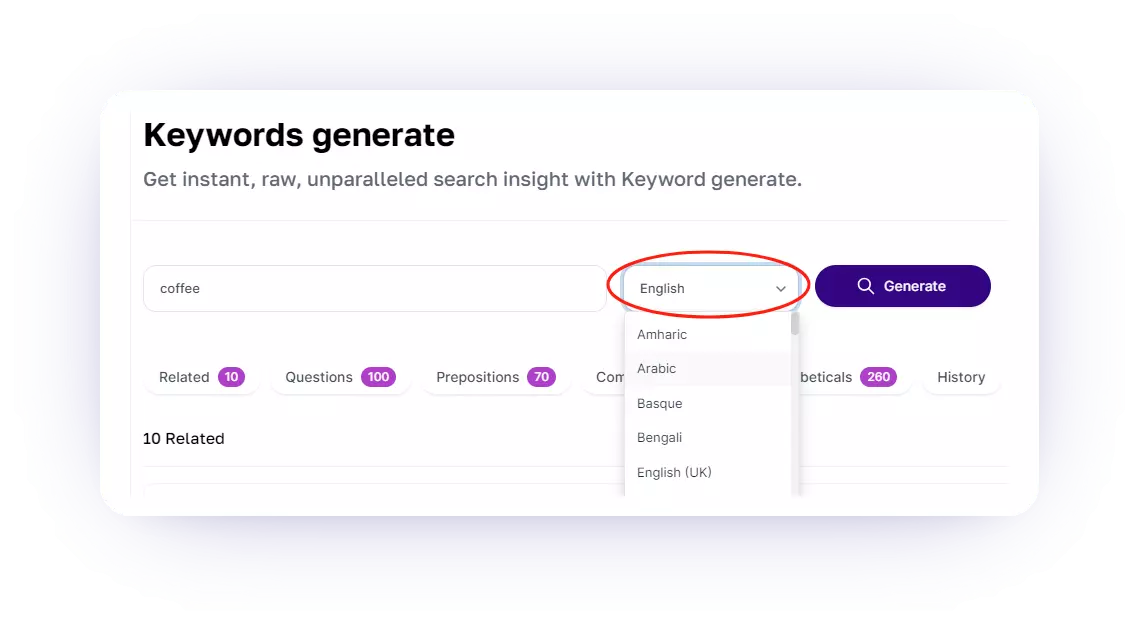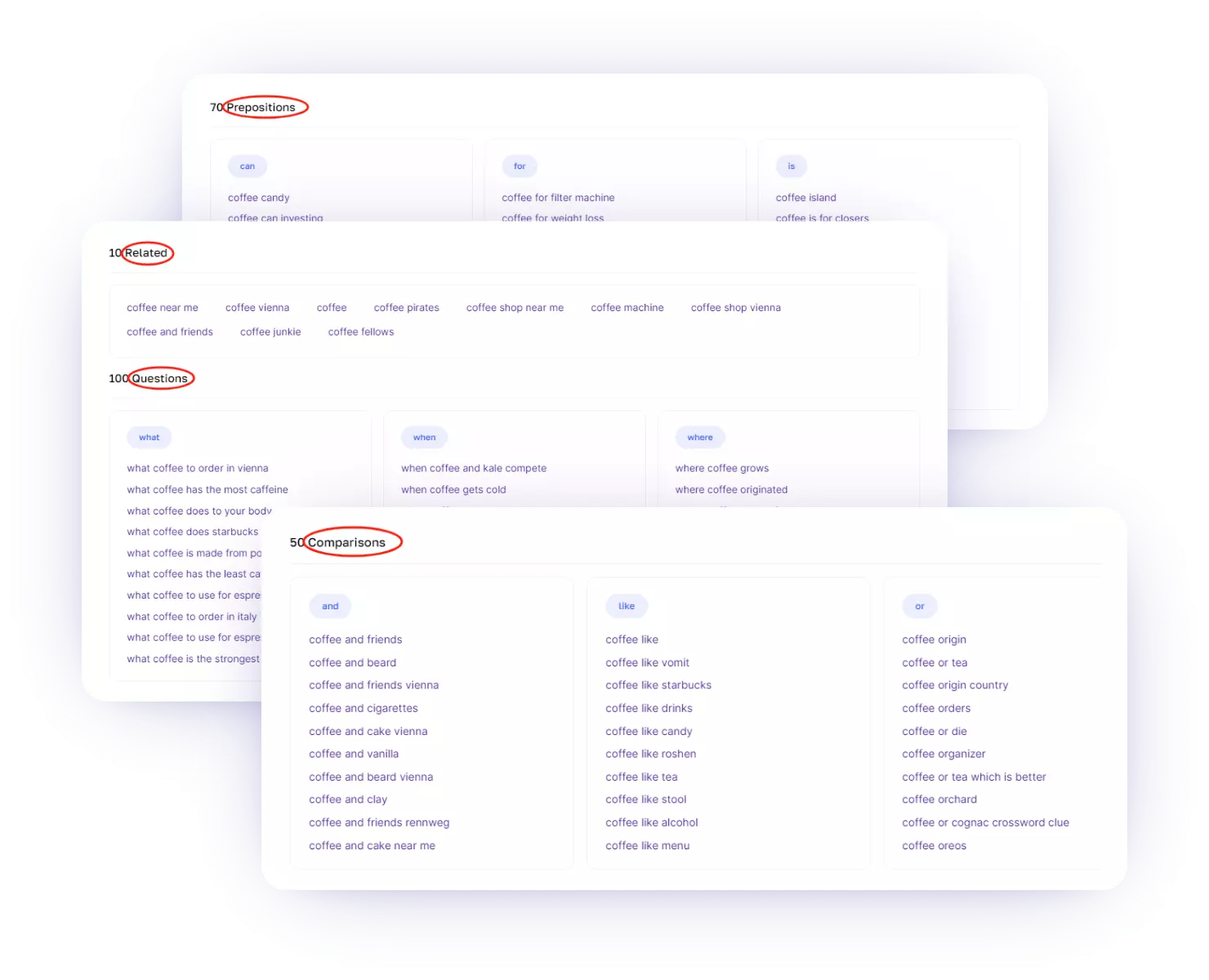
Those who have engaged in keyword research are undoubtedly familiar with the term "long-tail keywords." But what are long tail keywords?
Long-tail keywords are specific and usually longer phrases that users enter into search engines when looking for highly specific information.
In this article, we will explore what long-tail keywords are, why they matter in SEO, and how harnessing their power can elevate your online presence.
What Are Long Tail keywords?
Within the world of online marketing, the term "long-tail keywords" finds its significance in the strategy of search engine optimization (SEO).
These keywords refer to multi-word or hyper-focused phrases that consumers commonly enter into the search bar when seeking something particular.
The specificity of long-tail keywords indicates that when a consumer utilizes them in a search, they are typically in the advanced stages of their purchasing journey.
In contrast to single-word keywords or "head" terms such as "puppy," "shirt," and "vacation," which generally signify a phase of research, long-tail keywords hone in on precise needs and exhibit a higher likelihood of conversion.
Related Reading: Long Tail vs Short Tail Keywords
Why Are Long-Tail Keywords Important in SEO?
Here are some benefits of long-tail keywords in SEO.
1. Less Competition, Easier Rankings
One of the primary advantages of long-tail keywords is the lower competition. Large, authoritative websites often target shorter, more general keywords.
By focusing on long-tail keywords, smaller websites can compete effectively and improve their chances of ranking on search engine results pages (SERPs).
2. Higher Conversion Rates
Long-tail keywords attract users with specific needs or intent. As a result, the traffic generated by long-tail searches is more likely to convert into leads or sales.
Users searching for detailed information are often closer to making a decision, making long-tail keywords valuable for businesses aiming to convert visitors into customers.
3. Niche Targeting
Long-tail keywords are instrumental in niche targeting. Businesses can tailor their content to address niche audiences with specific interests or requirements.
This targeted approach not only attracts the right audience but also establishes authority within a particular niche.
4. Cost-Effective Advertising
In paid advertising, long-tail keywords are often more cost-effective than broad keywords. The cost per click (CPC) for long-tail keywords is typically lower, making them an efficient choice for businesses with budget constraints.
How to Find Long-Tail Keywords?
Here are some ways to find long tail keywords.
1. Use Keyword Research Tools
Employ keyword research tools such as Niche Finder's Keywords Generate to identify relevant long-tail keywords in your niche.
You can specify keyword language so the search results will be better for local SEO.


2. Analyze User Search Intent
Understand the intent behind user searches. Consider the questions users might ask related to your products, services, or industry.
Crafting content that directly addresses these queries enhances your chances of ranking for relevant long-tail keywords.
3. Explore Google Autosuggest and Related Searches
Leverage Google's Autosuggest feature and related searches at the bottom of the search results page.
These suggestions offer valuable variations of your target keywords, providing insights into real-time user queries.
4. Monitor Industry Trends
Stay informed about industry trends and developments. Identifying emerging topics or specific areas of interest within your niche can help you discover new long-tail keywords to incorporate into your content strategy.
5. Evaluate Competitor Strategies
Analyze the keywords your competitors are targeting. Tools like SEMrush and Ahrefs allow you to explore your competitor's keyword rankings.
Identify gaps in their strategy and capitalize on opportunities to target relevant long-tail keywords they may have overlooked.
6. Consider Local and Geo-Specific Keywords
If applicable to your business, include local or geo-specific terms in your long-tail keywords.
This is particularly beneficial for businesses targeting a specific geographical location, as users often include location-specific details in their searches.
How Do You Pick Long-Tail Keywords?
Discovering impactful long-tail keywords requires a comprehensive approach involving a deep understanding of your audience, analysis of search trends, and the utilization of reliable keyword research tools.
Here's a complete guide to assist you in this process:
1. Understand Your Target Audience
Begin by defining the demographics, interests, and pain points of your target audience. Consider their specific needs, preferences, and language to create a foundation for your keyword strategy.
2. Brainstorm Relevant Topics
Identify broad topics that are closely related to your products, services, or content. Delve into what your audience is actively searching for and anticipate the questions they might have regarding your niche.
3. Utilize Keyword Research Tools
Leverage powerful keyword research tools such as Semrush, Ahrefs, or Google Keyword Planner. Explore these tools to discover keyword suggestions, understand search volumes, and assess competition levels for each potential keyword.
4. Analyze Search Trends
Identify prevailing search queries and long-tail variations associated with your chosen topics. Look for patterns and common phrases that users frequently employ when conducting searches in your domain.
5. Consider Search Intent
Gain insight into the intent behind various search queries. Understand whether users are seeking information, products, comparisons, or reviews. Tailor your long-tail keywords to align with these distinct search intents.
6. Evaluate Keyword Difficulty
Assess the keyword difficulty you would face when attempting to rank for specific long-tail keywords.
Opt for keywords with lower competition and higher relevance to maximize your chances of success.
7. Prioritize Relevance
Focus your attention on long-tail keywords that not only have lower competition but also align closely with the interests of your target audience and the central themes of your content.
8. Use Keyword Variations
Explore different variations of your identified long-tail keywords. This includes synonyms, related terms, and alternative phrasing that users might employ when conducting searches.
9. Analyze Competitor Keywords
Study the keywords that your competitors are targeting. Analyzing their strategies can help you identify potential opportunities and uncover gaps in your keyword strategy.
10. Monitor Performance
Regularly track the performance of your chosen long-tail keywords using analytics tools. Pay attention to results and evolving search trends, and be prepared to adjust your strategy accordingly.
By following these steps, you can effectively identify and incorporate long-tail keywords that resonate with your target audience.
This approach not only enhances the relevance of your content but also drives targeted traffic to your website, ultimately contributing to the success of your online endeavors.
Conclusion: What Are Long Tail keywords
Incorporating long-tail keywords into your content not only improves your website's visibility in search engine rankings but also establishes your authority within niche markets.
As you embark on your SEO journey, consider the power of long-tail keywords as more than just a search engine optimization strategy; view them as the key to unlocking a deeper connection with your audience and propelling your online presence to new heights.
Read More: How Many Keywords Should I Use?

